Global retailers are showing that omnichannel is no longer a strategy you experiment with but the way modern retail operates. The most profitable brands have built unified retail systems that link stores, websites, apps, and CRMs into one shared network that manages all core retail data.
With that foundation in place, every team works with the same information. Fulfillment becomes faster, personalization improves, and customer loyalty grows.
This article explains how unified commerce strategies turn omnichannel from a theory into measurable profit, with clear steps any eCommerce and retail team can apply.
Key takeaways
- Profit in 2026 will come from connected systems, not more channels, and retailers that link data, stock, and teams see real financial impact.
- Measuring omnichannel performance requires one shared view of the customer across online and in-store interactions.
- Small, connected actions (from unified loyalty to digital receipts) create fast ROI and build the foundation for sustainable growth.
The reality of omnichannel in 2026
Most retailers already have the right tools in place: a website, an app, a CRM, and a POS system. What they often lack is connection. Each tool works, but rarely together.
That gap is now too large to ignore. Customers expect stores and websites to recognize them as the same person. They want to check stock online, pick up in store, and receive offers based on everything they have bought before.
Global retailers from Europe to the Middle East now treat their physical stores as digital engines: fulfillment centers, data capture points, and loyalty drivers that feed back into online systems.
AI and unified data make this possible. They allow retailers to connect every interaction, automate decisions, and deliver consistent experiences across all touchpoints. When data moves freely, even complex operations run smoothly and profitably.
Also read:
How to Unify Offline and Online Data for Omnichannel Retail Personalization
Five key eCommerce upgrades that increase profit
1. Unify stock visibility
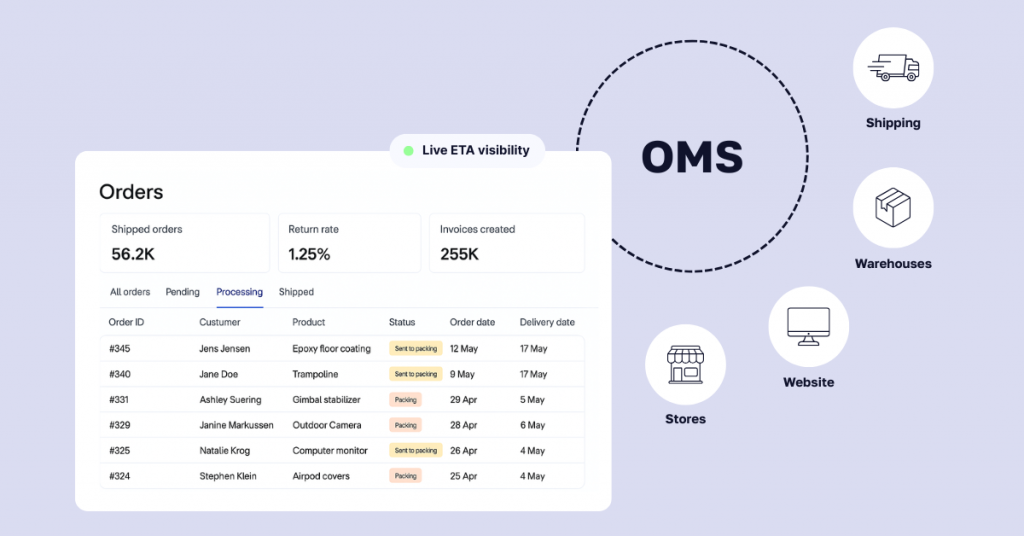
A unified stock system removes the disconnect between stores and online inventory. Integrating an Order Management System (OMS) allows real-time syncing, so every channel reflects accurate availability. Adding live estimated arrival times, such as “Arrives by 5 PM tomorrow,” gives shoppers confidence to complete their purchase.
Retailers adopting advanced OMS systems are already seeing shorter delivery windows and higher conversion rates thanks to live ETA visibility and intelligent routing that automatically chooses the fastest or most efficient fulfillment point. This accuracy also cuts refund requests caused by overselling or incorrect stock levels.
2. Ship-from-store and BOPIS/BORIS
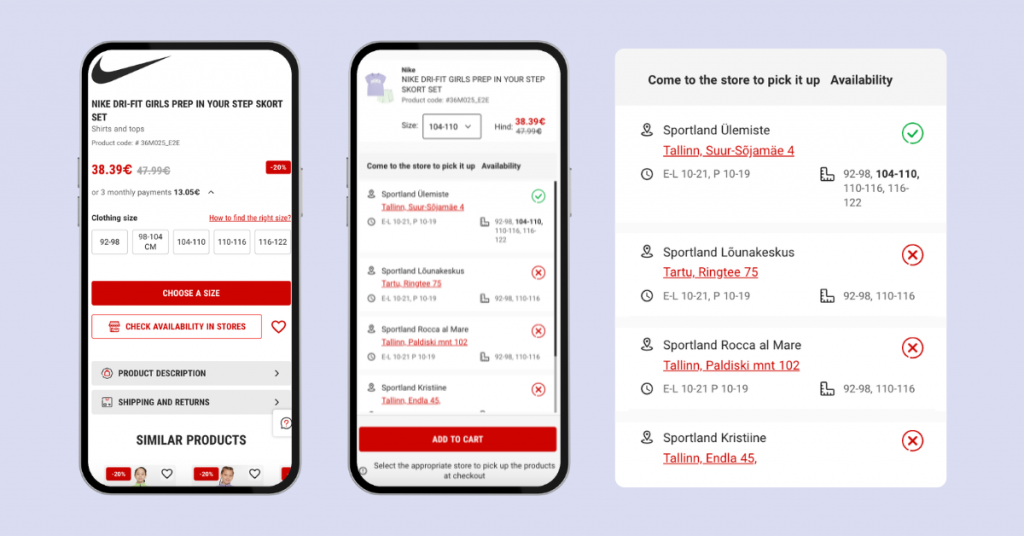
Using physical stores as fulfillment points changes how they support the sales process. When customers can buy online and pick up or return in store, both convenience and traffic increase. This model is known as BOPIS (Buy Online, Pick Up In Store) and BORIS (Buy Online, Return In Store) – two of the most effective ways to connect digital and physical retail.
Automating routing rules helps select the store best positioned to handle each order based on proximity and stock availability. Some leading retailers now fulfill most of their online orders directly from stores, which lowers last-mile delivery costs, speeds up fulfillment, and drives more visits to physical locations.
3. Cross-channel loyalty program
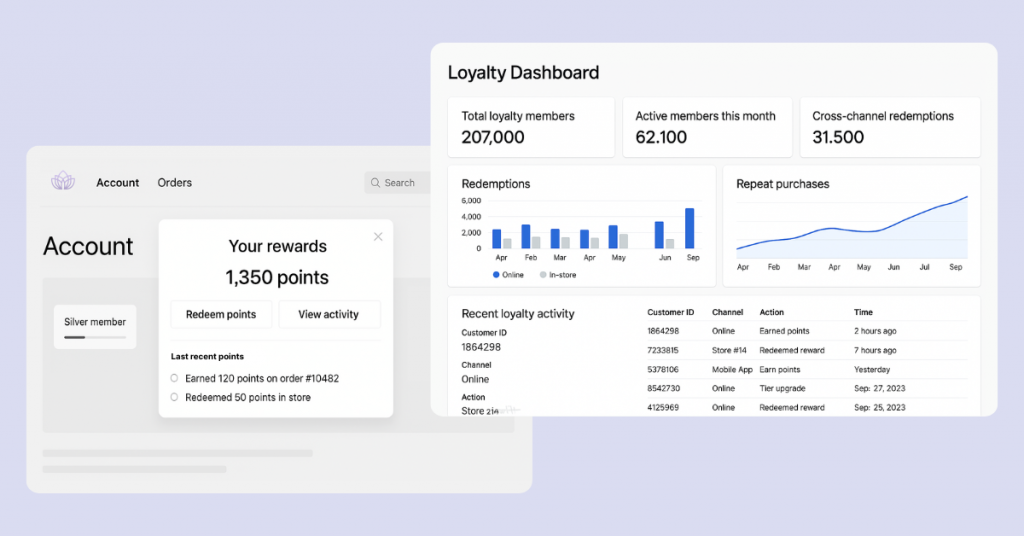
Loyalty systems are most effective when they operate across every channel. One shared loyalty wallet in both the app and POS lets customers earn and redeem rewards no matter where they shop.
These programs are now evolving into unified identity systems. Whether someone shops online or in-store, a single account records every interaction, making personalization more accurate and lifetime value easier to track. A Customer Data Platform (CDP) helps pull these interactions into one profile so offers can be triggered automatically based on behavior such as how recently they purchased or how often they return. This leads to more frequent repeat purchases and stronger long-term retention.
4. Unified digital receipts and customer timeline
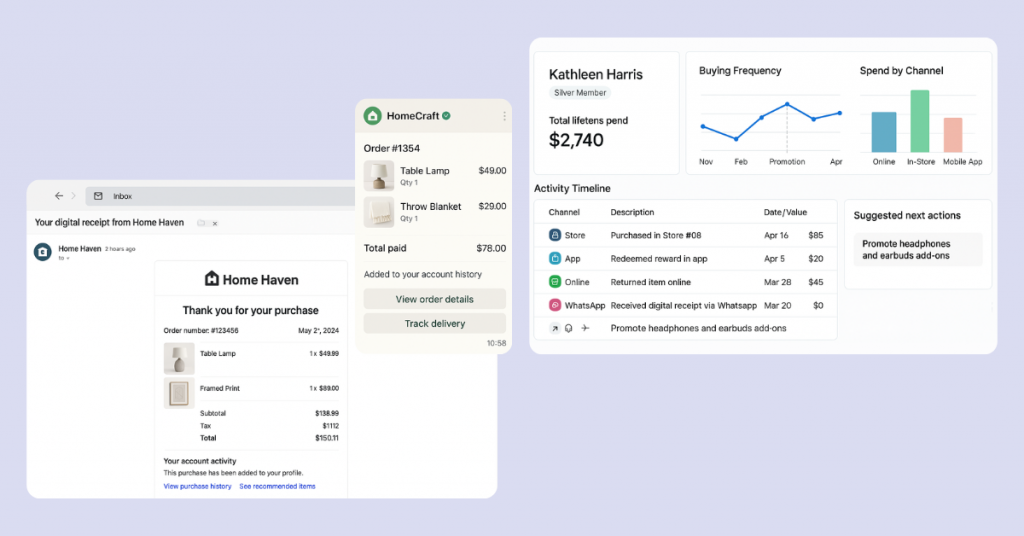
Replacing paper receipts with digital versions sent through WhatsApp or email makes each transaction part of a connected customer record. When all purchases are linked to a single account, brands can view complete buying patterns and suggest relevant add-ons at the right time.
Digital receipts are becoming more than a convenience. They are key data points linking store activity to Customer Relationship Management (CRM) profiles and ensuring service continuity across all channels. This creates stronger trust, smoother support, and automated reactivation campaigns that feel timely and relevant.
5. AI shopping assistant

Conversational AI tools can now act as real-time shopping guides. Adding an assistant to product pages or chat apps helps customers get instant answers about size, fit, or availability and can suggest complementary items.
Retailers are seeing strong engagement when chat-based shopping tools blend human assistance with AI logic, combining service, discovery, and purchase in one seamless experience. This approach is part of a broader trend known as conversational commerce, where dialogue-driven interactions replace static browsing and help shoppers make faster, more confident decisions.
With scandiweb’s Chat to Buy solution, retailers can take this even further by enabling customers to complete purchases directly within chat. Clients using this approach have seen higher conversion rates, increased average order value, five times longer customer engagement, and a meaningful share of previously inactive customers returning to buy again.
Read more:
Case Study: Conversational Commerce Brings 31% of Churned Customers Back
Store quick wins for fast ROI
Small actions inside the store can quickly improve both revenue and customer engagement. These steps require minimal setup but deliver visible returns within weeks, like increasing average transaction value and repeat visits.
Sending a short “thank-you” message on WhatsApp after each sale keeps the interaction personal and useful. Adding product care tips or a quick how-to helps build trust without feeling like another promotion.
Handing out “surprise-me” incentive cards to customers who have not purchased in a while is another simple way to reactivate interest. A small mystery discount is often enough to bring them back.
Place QR codes around the store that let visitors check stock, redeem loyalty rewards, or view related products. Each scan connects in-store behavior to digital profiles, making future offers more precise.
Finally, offer customers the option to receive digital receipts through WhatsApp at checkout. This makes it easy for them to keep records and gives your team a direct, trackable communication channel for future campaigns.
🚀 Quick takeaway
Small in-store actions deliver quick results. WhatsApp follow-ups, QR scans, and digital receipts help you stay connected with customers, collect useful data for personalization, and see a faster return from everyday store operations.
Making omnichannel measurable
Omnichannel success is only real when it can be measured. The goal is to see every sale, pickup, and return as part of one connected customer journey. That requires tracking performance across both digital and physical touchpoints, using data that flows in both directions.
What to track
To measure whether your omnichannel setup is working, focus on the metrics that show how customers move between channels and where value is created:
- Cross-channel redemption, such as how many in-store purchases come from customers who first interacted online
- Pickup footfall conversion, showing how many online orders lead to store visits and extra sales
- Repeat purchase rate per unified customer ID, to measure loyalty beyond a single channel
- Time to fulfillment from store versus warehouse, to identify the most efficient delivery paths.
How to measure
Combine your order management and CRM systems, so data from every channel ends up in one place. Tag offline actions, including digital receipts and QR scans, with customer IDs to make each purchase traceable and connected to the same profile.
Leading retailers go a step further by adding loyalty data to this setup and viewing everything in a single dashboard. This helps them see not just where sales happen, but how each channel influences profit and customer behavior overall.
Common blockers and how to fix them
Even well-equipped retailers struggle to make omnichannel work in practice. The issues usually come down to systems, goals, and people.
Disconnected systems
When POS, ERP, and OMS tools operate separately, information gets lost and customers notice the gaps. Connecting these systems should be the first step in any omnichannel plan. Start with real-time stock and order syncing, so every team works with the same data.
Misaligned KPIs
Online and in-store teams often chase different targets, which creates internal competition instead of collaboration. Set shared metrics such as pickup revenue, customer lifetime value, or fulfillment speed. When both teams benefit from the same results, coordination improves automatically.
Read more:
How to Avoid Internal Sales Cannibalization Between Online & Offline
Change resistance
Resistance usually comes from habits, not technology. People support new processes when they understand how it makes their work easier or more rewarding. Focus on clear incentives, such as faster service or simpler sales tracking.
Tie performance rewards to real omnichannel results, for example, acknowledging store staff who fulfill online orders or turn pickups into extra sales. Keep training simple and centered on daily tasks.
🚀 Quick takeaway
Fix systems first, align goals second, and make adoption rewarding. When tools, metrics, and people are connected, omnichannel starts working as one business, not two.
Conclusion
Omnichannel profitability is now a proven outcome. Retailers that have unified their systems and teams are already seeing stronger growth, steadier margins, and clear improvements in customer retention.
The goal is not to appear in every channel, but to connect the right ones through shared data and coordinated operations. The retailers who understand where their customers are, and act when they engage, are the ones turning connection into profit.
Want to make omnichannel profitable for your business? Contact us, and we’ll map out the steps needed to unify your data and bring your eCommerce and retail operations into one revenue-driving system.
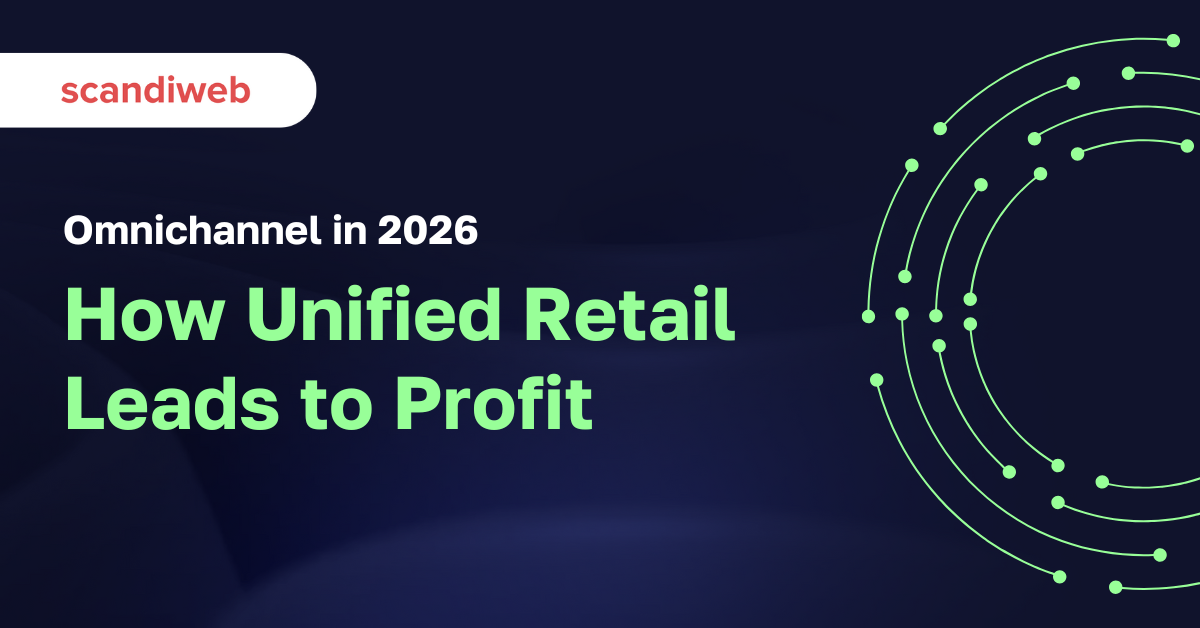

Share on: